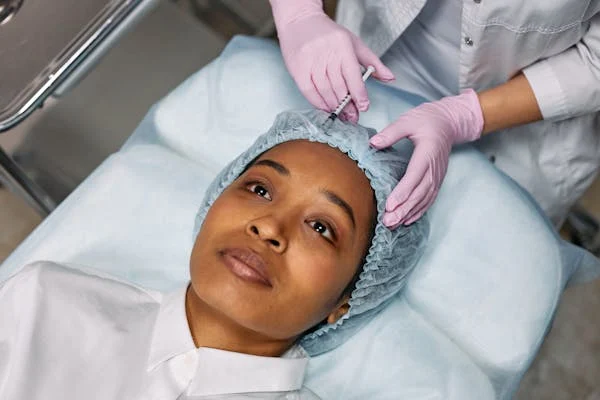Botox, a well-known injectable treatment, is used to improve appearance and treat various medical conditions. Cosmetic and medical Botox treatments each serve distinct purposes and offer unique benefits. Here is more information on cosmetic versus medical Botox treatments:
Cosmetic Treatments
Cosmetic Botox is primarily used to reduce the appearance of wrinkles and fine lines on the face. This type of treatment targets dynamic wrinkles, which are caused by making repeated facial expressions over time. Botox temporarily paralyzes the muscles responsible for these expressions. This causes the skin to become smooth and results in a more youthful appearance.
Cosmetic Uses
One of the most common uses of cosmetic Botox is for treating forehead lines. As individuals age, horizontal lines often develop across the forehead due to frequent expressions such as frowning or raising eyebrows. Injections can relax these muscles, reducing the appearance of lines.
Another typical application is the treatment of crow’s feet. These are the small lines that form around the eyes when smiling or squinting. To reduce the appearance of crow’s feet, a skincare professional injects Botox into the muscles near the eyes, diminishing crow’s feet lines.
Medical Treatments
Medical Botox was originally approved for therapeutic purposes before it became popular in the cosmetic industry. It is still used to treat various health conditions, such as migraines and excessive sweating.
Medical Uses
One of the major medical applications of Botox is to treat chronic migraines. Patients who suffer from debilitating headaches can have Botox injected into specific areas around the head and neck to prevent headaches before they occur. Studies show that this type of treatment for migraines can reduce the average frequency of headaches per month by 50%.
Another common medical use is for patients suffering from hyperhidrosis, a condition characterized by excessive sweating not related to heat or exercise. Botox can be injected into the sweat glands of areas like the underarms, hands, or feet to substantially reduce sweating.
Botox is also used in the treatment of spasticity, which is a disorder that disrupts movement patterns when all of the muscles in a certain area contract at once. The injections help manage muscle stiffness and involuntary muscle movements caused by spasticity. This application is particularly beneficial for individuals with neurological disorders such as cerebral palsy or for those who have had a stroke.
Similarities and Differences
Whether treating wrinkles or medical conditions, both cosmetic and medical Botox utilize the same active ingredient, Botulinum toxin type A. The differences are in the intended outcomes, dosing and coverage, and the specific techniques used by healthcare professionals.
Similarity: Administered by Trained Healthcare Professionals
Both cosmetic and medical Botox involve precise injection techniques administered by qualified healthcare practitioners. The method of administering Botox is highly controlled to verify safety and efficacy. Professional training allows healthcare personnel to give their patients the intended results while minimizing risks such as bruising or unwanted muscle weakness.
Differences: Dosing and Coverage
Another distinction is in the dosing and coverage needed for cosmetic versus medical purposes. Cosmetic treatments typically require less Botox and are confined to small, localized areas to smooth out fine lines and wrinkles. Medical treatments may involve larger areas or require a higher dose as they are tailored to address specific health conditions.
Talk to Your Dermatologist About Botox
Botox treatments offer diverse benefits, whether you’re aiming for aesthetic improvements or seeking relief from a medical condition. Understanding the differences between cosmetic and medical applications can help individuals make informed decisions about which treatment best suits their needs. If you’re unsure of which type of treatment is right for you, contact a dermatologist to talk about your options.


